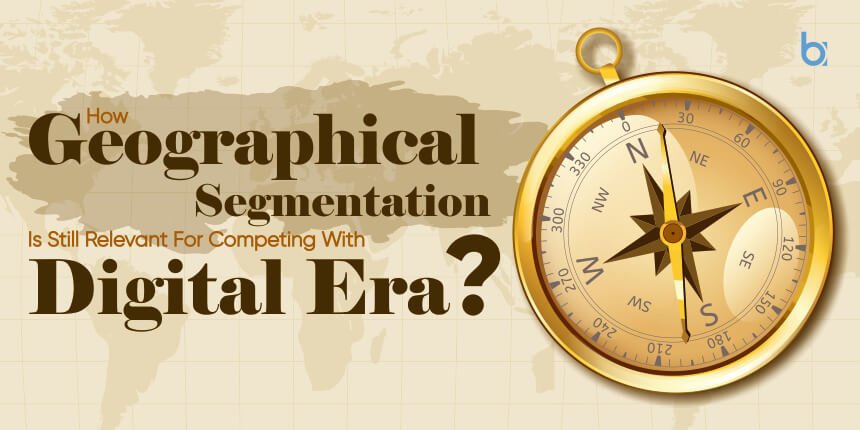Time and again history has witnessed that human behavior alters according to their needs and preferences. Purchasing behavior is one of them. Since the concept of the market run has been written, segmentation appears to be a very natural process for humans. They have always been engaged in economic and marketing activities either of their own unstructured give-and-take ways or any government/private body’s organized method like the barter system. As humans evolved, so did the marketing aspects. The ever-changing need of the human population introduced many variables in the digital era.
Today, in order to fulfil the shifting customer demands, entrepreneurs and marketers have to implement every trick in the book to stay relevant in the business. Market segmentation is one such efficient tool used by marketers and sellers to divide the market of potential customers into different groups and segments based on certain characteristics. Although the adoption of market segmentation began since late 1900’s, its appropriate practise in a marketing plan is still extremely beneficial even now. Speaking of segmentation, location is one of the characteristics used for splitting people into groups. This geographical segmentation plays a crucial role in formulating a strong marketing campaign based on the location and requirements of people.
However, few people think that in this digital era, geographic segmentation may be the least talked about marketing basis among demographic, psychographic and behavioral segmentation when it comes to online shopping. The way online marketing has received attention and new growth has hacked the old tactics of the market, it can be believed that soon “where people live” will no longer matter in relation to what they buy. Online shopping has created a fragmented buying journey which seems to wipe out geographic relevance in the near future. But, geographic segmentation is an extremely important marketing tool that helps businesses solves real-world problems. And to justify this, many big-shots with their successful businesses are real-life examples roaring as proof.
How McDonald’s leverages geographic segmentation as a successful tool?
McDonald’s segmentation is one of the integral components of the marketing strategy. But how does the company decides on which products to include in its main menu and the rest to be kept limited based on demands? Well, the company follows two core strategies that they recommend all marketers to use. The first is target marketing, i.e. who are you talking to and second is product positioning, i.e. what do you want them to think. These two core strategies involve geographic segmentation that is dividing population based on geography such as city, state, country, and international region including variables like rural, suburban, and urban.
But how McDonald’s applies geographic segmentation around the world? The key factors behind its success is amalgamating and trying different innovations together. The company provides a variety of services and products catering to every consumer’s needs that is widely diverse, based on geographic factors, for example:
• For suburban and urban population: McDonald’s offers a fast and low-priced menu to this population. Here, the fast-food giant has also considered other characteristics such as income, lifestyle and occupation i.e demographic and psychographic segmentations.
• In the United States: McDonald’s spends the biggest share of its budget. The company usually conducts many trials on new products and innovation in its biggest-audience home country.
• In Japan: Here, the company’s ad campaigns are widely different. The ads are focused on both adults as well as children, with some features which are unique and tribute to the locale’s culture. Because the appetite of the Japanese is different from the Americans, the serving size of burgers, fries, and drinks are smaller in Japan.
• In China: China is a big market for McDonald’s crossing over 2,700 outlets. Adding the flavor, the eatables of the company are adapted from local tastes and preferences. Instead of meat from chicken breasts, McDonald’s adds meat from chicken thighs in its chicken burgers. During Chinese New Year, the company offers Grilled Chicken Burger served with curly fries and 12 animal Chinese horoscope signs.
In this way, the above example depicts that geographic segmentation is no longer a simple or static marketing technique. It is rather a relevant characteristic for competing.
Why geographic segmentation is important even for online shopping?
What exactly geographical segmentation does for companies competing with online shopping methods? It’s quite a difficult task for other companies to go head to head with online retailers. There are many methods geographical segmentation works with such as marketing mix, SWOT analysis, 4P’s, and others to meet the target audience precisely.
- Serving beyond language barriers: Red Bull runs its ads in multiple languages to reach and engage the maximum consumers as possible. According to statistics, only in the US, there are more foreign-born citizens than in any other country in the world. Moreover, English is the official language but a large number of Americans don’t speak English. It means if a company’s ad is only available in English, it will be difficult for consumers to understand the campaign and unable to make them buy its products. For example, most of Los Angeles citizens speak Spanish as it is their native language instead of English. Running ads in the English language might be risky for Red Bull’s ROI but the brand can delight and surprise the Spanish speakers with Spanish ad-placement. However, it depends on the analytics made over the population speaking a particular language.
- Weather determines customers’ behaviors: Believe it or not, but whether or climate brings changes in customer’s behaviors. People living in cold places need more heat than other people around the world. This causes them to intake food which releases heat inside their bodies such as all animal foods, cereals, fats, and root vegetables, falling into the warm category. Companies target consumers situated in these areas by promoting their high percentage of heating foods and supplies. Similarly, clothing and apparel companies use geographical segmentation as their best tool to market clothes based on seasonal wearables throughout the year. Weather patterns can even affect the price value where customers are willing to purchase certain products like green tea and t-shirts in summer and coffee and windcheaters in cloudy-windy days.
- Favorable for local businesses to grow: Geographical segmentation not only benefits successful businesses but helps small businesses with a limited budget to serve a wide range of customer base in a local or regional territory. With this marketing tool, they are allowed to focus their marketing strategies on a defined area of interest without spending unnecessary capital. For example, if a startup company wants to sell breakfast food like chocos and wants to build a concrete customer base, it will need to segment the product as per age group and lifestyle. These segmentations will focus on providing different nutritional values to different ages; a child can have chocos in breakfast before going to school whereas an adult can eat the same as an energy food before a workout.
To sum it all, geographical segmentation is just as relevant and necessary as the other types for targeting varied age groups, pitch better marketing and communication strategies, and getting impressive conversion rates.















